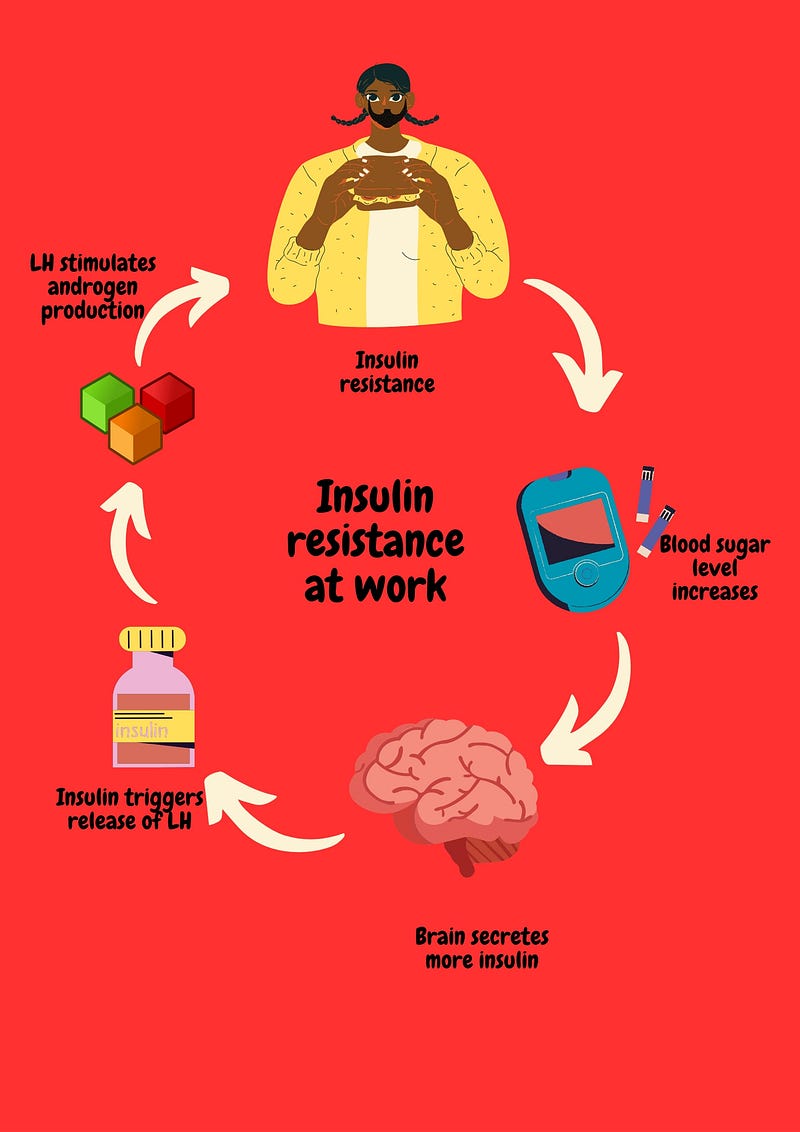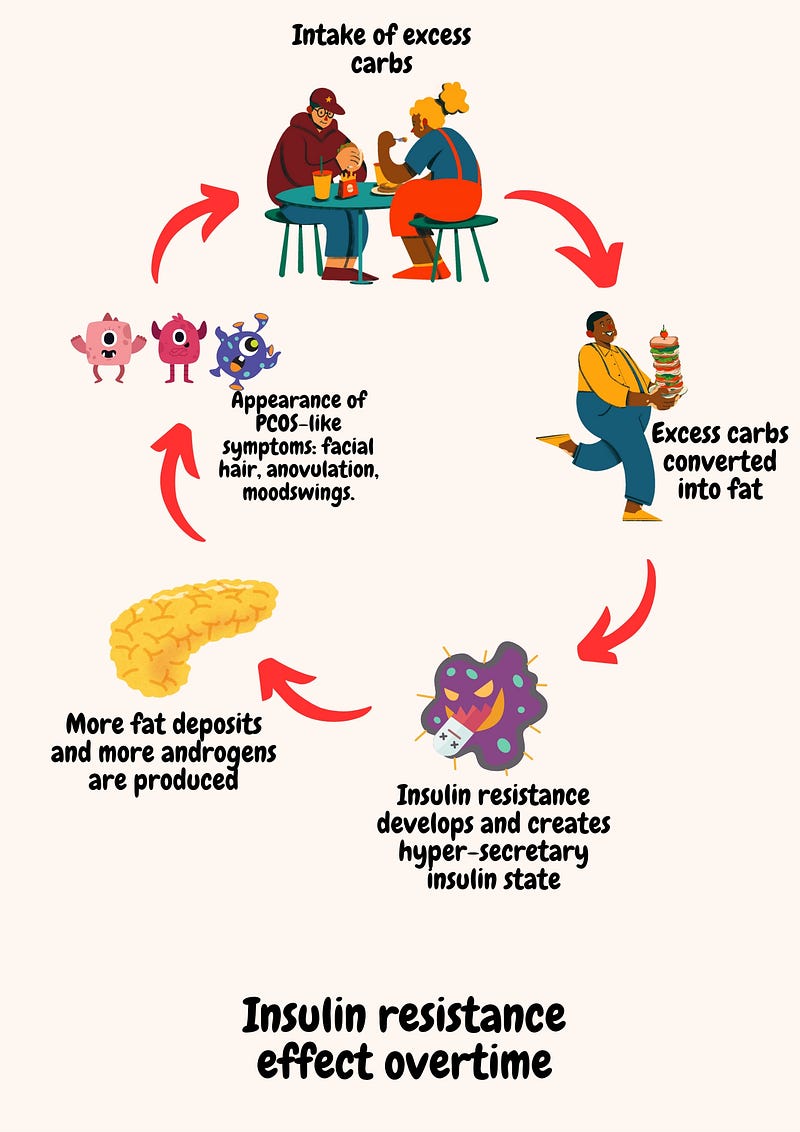Unlocking the Secrets of PCOS, Obesity, and Diabetes Management
Written on
Understanding the Connection Between PCOS and Metabolic Disorders
Are you tired of dedicating countless hours to the gym, monitoring your carbohydrate intake, yet still struggling with stubborn belly fat? Here’s a little insight: the root cause remains unaddressed, which is likely why you're seeing minimal results.
Don't worry; we'll delve into how to manage your symptoms effectively for sustainable fat loss. Symptoms like persistent fat, low energy, acne, mood swings, and excessive facial hair suggest that the issue is more complex than just carbs and inactivity. Especially if you find yourself drained after workouts, it's time to explore deeper underlying causes.
The Role of Insulin Resistance in PCOS Development
Insulin resistance occurs when your body fails to respond adequately to insulin, leading to elevated blood sugar levels. This condition can initiate subtle disruptions that may escalate into significant metabolic issues, such as diabetes and PCOS.
As insulin resistance develops, the brain signals for increased insulin production, mistakenly believing that insulin levels are low. This hyperinsulinemia promotes the secretion of luteinizing hormone (LH), leading to increased androgen production, which can aggravate PCOS symptoms¹.

What Are Androgens and Their Implications?
Androgens are hormones responsible for male characteristics, such as facial hair and a deep voice, with testosterone being the most notable androgen. Women also produce androgens, albeit in smaller amounts, crucial for maintaining cardiovascular health, bone density, and muscle mass².
However, an excess of androgens can lead to hair loss, acne, weight gain, fluid retention, and irregular menstrual cycles, contributing to symptoms associated with PCOS².
How Insulin Resistance Leads to Androgen Overproduction
Insulin's primary role is to facilitate energy usage in the body. However, when your caloric intake exceeds your body's needs, excess calories convert to fat. Over time, this pattern fosters insulin resistance, causing your body to store more sugar as fat, resulting in low energy levels despite adequate food intake.
Androgens are synthesized from fat, and with insulin resistance, the brain increases LH release, stimulating androgen production from fat reserves. This cycle perpetuates itself, leading to disorders like diabetes or PCOS³.

Strategies for Reversing Insulin Resistance
Now that you recognize the deeper implications of weight gain, it's essential to understand that it's merely a symptom, not the core issue. By addressing hormonal imbalances, weight loss can become manageable, especially with an active lifestyle.
Hormonal disruptions progress gradually, often presenting subtle signs such as fatigue, cognitive fog, mood fluctuations, and headaches. While these can sometimes be attributed to stress or poor sleep, persistent symptoms warrant closer examination and natural intervention.
Dietary Approaches: The Ketogenic Diet
The ketogenic diet serves as an excellent starting point to combat insulin resistance. By limiting carbohydrate intake to under 50 grams daily and focusing on adequate fats and proteins, the body shifts to using fat for energy. This not only reduces body fat but also enhances insulin sensitivity and stabilizes blood sugar levels.
Transitioning to a keto diet can feel overwhelming, but small, manageable changes can make the process easier. A simple and affordable recipe is included at the end to help you begin.
The Importance of Regular Exercise
There’s no substitute for physical activity. Staying active can prevent many health issues. Even exercising once a week is beneficial. You don’t need expensive equipment; pilates, for instance, can be effective when done twice weekly.
Foods to Avoid and Healthier Alternatives
- Cut down on caloric beverages. Opt for fresh juice once daily to support liver and kidney health.
- Replace heavy dough-based foods with sourdough or whole grains for better blood sugar management.
- Choose roasted nuts like cashews, walnuts, or almonds over ultra-processed snacks for healthier fats and nutrients.
- Minimize your intake of processed foods and aim to cook fresh meals whenever possible.
Quick Breakfast Recipe
Ingredients:
- One organic egg
- Spinach leaves
- Ghee or olive oil
- One avocado or 2/3 cup of walnuts
Mix the spinach leaves with a whole egg and cook in a tablespoon of ghee or olive oil. Pair this omelet with avocado or walnuts. This light meal can help bridge the gap between breakfast and lunch, encouraging your body to enter ketosis as long as your other meals are balanced.
References
Disclaimer: This information is not a substitute for professional medical advice. It aims to enhance your understanding of your body and health maintenance.
Thank you for reading! For more content like this, consider subscribing to my newsletter: substack.com/@drfatimam
A comprehensive look at insulin resistance and its impact on weight loss, featuring insights from Mass General Brigham.
Explore how some women with PCOS benefit from diabetes medications, shedding light on health strategies that work.